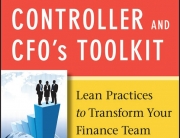In every workshop I ask one question “Who has made a recruiting decision they have lived to regret?” Every manager puts their hand up. The carnage caused is relived in their facial expressions. Why does this happen so often?
I suspect that many readers will recall instances when the interviewee has arrived and you realise, with a degree of horror, that you have not yet reviewed the CV, nor prepared enough for the interview. You will be on the back foot, and a smart interviewee is now in control, painting a picture that will impress you and hiding any issues that might have caused you concern.
Yet, recruitment should be seen as the most important activity a manager does. It should be the most invested and well prepared exercise we ever do, for the following reasons:
- Recruiting properly is like putting a fence on the top of a cliff—it is better to spend forty hours recruiting a candidate properly rather spend four hundred hours cleaning up after a recruiting mistake.
- You can recruit for technical skills and through training improve skill levels, but you cannot change a person’s values. If an individual’s values are different from those of the organisation, you will always have conflict.
- Better recruits will lead to more internal promotion, both saving costs and maintaining institutional knowledge.
Peter Drucker’s Five-Step Recruitment Process
Management guru Peter Drucker noted that there were five steps to a sound recruitment:
- Understand the job so you have a better chance of getting a good fit. Here we need to understand not only what the duties are but what skills and expertise are required. If you have a previous high performer in that role, model the job on their traits. Drucker however pointed out that you should never give a “New Job to a new person”. Drucker believed that outsiders do not stand a chance with implementing new systems in an organization due to concerns over change, a lack of credibility, and the over powering nature of the default future. Instead you need to appoint and train an in-house manager who is well respected in the organization and who has a pile of “I owe you” favours which they can call on.
- Consider three to five people in the shortlist, to maximize your chances of getting the best fit. Often we only have one or two suitable candidates. Drucker warns us that this is not enough. Cast your net wider to attract more interest.
- Study candidates’ performance records to find their strengths so that you can ascertain whether these strengths are right for the job. Remember that the CV and the interview performance will be a set of smoke screens. We need to use modern recruiting techniques such as simulation exercises, psychometric testing, assessment centres, involving members of the team they will manage in the selection process, and in-depth checking of references and qualifications.
- Talk to candidates’ previous bosses and colleagues about them. Jack Welch, CEO of General Electric, would ring a previous employer and ask “We have Pat Carruthers short listed for a general manager position. I was wondering if Pat was re-applying for a similar position in your organisation, would you want him back?”. As Jack says he was surprised at the honesty, if he got a “No” that was enough for him to cease the recruiting of that candidate. He wanted to hear, “We would love to have them back, they made a significant contribution ________”
- Once the employment decision is made, make sure the appointee understands the assignment. It is very important that the new recruit can hit the ground running, through a well executed induction process and the setting up of some easy goals for the appointee to score.









